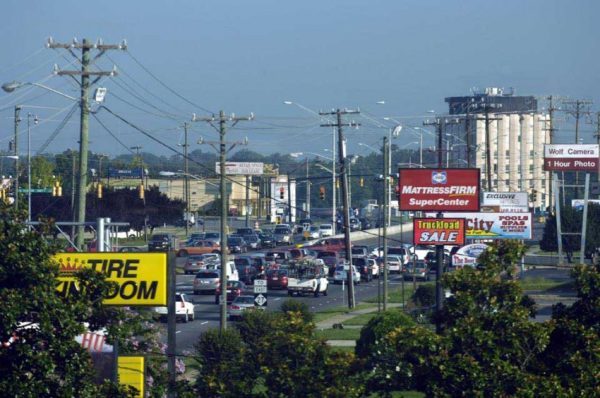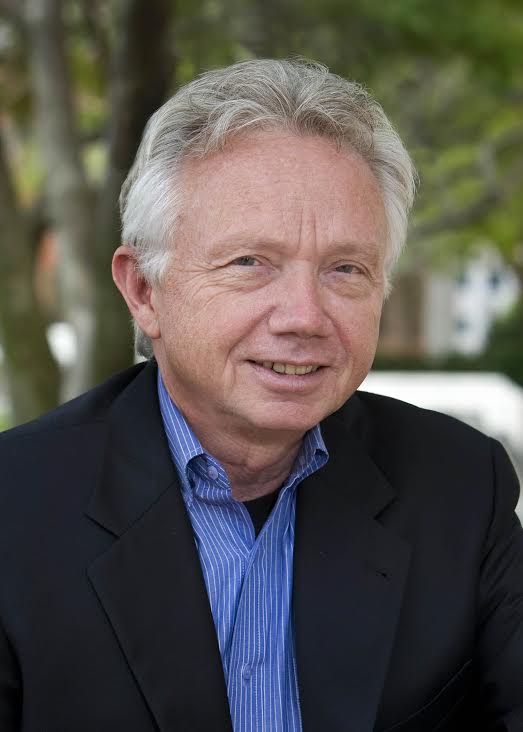Building an environment for better health: Event April 8

Can the buildings, streets and sidewalks around you change your health? Richard J. Jackson thinks they can.
Jackson, professor at UCLA Fielding School of Public Health, has made the creation of healthier environments his life’s work. He’s the author of books including Urban Sprawl and Public Health, published in 2004, which examined the connections between the human-built environment of cities and suburbs and the health of the people who live in that environment.
Want to go?Richard Jackson is the featured guest for Public Health Week. He will speak at 7 p.m. Wednesday, April 8, in a free event at UNC Charlotte Center City, 320 E. Ninth St. A reception beforehand will be at 6 p.m. RSVPs are requested. Note: Because of construction, access to UNC Charlotte Center City is restricted to Caldwell and Brevard streets, and to Ninth Street east of Brevard. Parking lots are entered from Ninth Street. |
He has served as director of the National Center for Environmental Health at the Centers for Disease Control and as California Health Department’s state health officer. While at CDC he established the national asthma epidemiology and control program, oversaw the childhood lead poisoning prevention program, and instituted the federal effort to “biomonitor” chemical levels in the U.S. population. While in California, he helped establish the California birth defects monitoring program. Jackson also hosted a four-part series for public television, Designing Healthy Communities.
Jackson is the featured guest for Public Health Week and speaks at 7 p.m. Wednesday, April 8, at UNC Charlotte Center City. The event is sponsored by UNC Charlotte’s College of Health and Human Services and Department of Public Health Sciences, BlueCross BlueShield of North Carolina, with additional support from the College of Liberal Arts and Sciences, the College of Arts + Architecture, UNC Charlotte Urban Institute and the Center for Professional & Applied Ethics.
Diane Gavarkavich of the UNC Charlotte Urban Institute recently spoke with Jackson. An edited version of the interview follows.
Can you describe what the “built environment” encompasses?
Basically the built environment is where we spend 99 percent of our time. It is that which is constructed around us, whether it is our homes, our offices, our schools and even our vehicles. Even the parks that we play in are largely constructed in much of America. The built environment ends up shaping our health and behavior in ways we are largely unconscious about.
The built environment is essentially the embodiment of someone else’s imagination. We can imagine places that are really healthy or we can imagine places that are totally car-dependent and encourage people in the direction of obesity and inactivity.
When you imagine someplace “really healthy,” what do you imagine?
In North Carolina, people knew how to build towns and communities and cities. They tended to have a transit hub, such as a bus station. (The city) had civic features downtown. It almost always had a park or common area in the center of town. Schools were relatively close by. As much attention was given to sidewalks and walking infrastructure as was given to car infrastructure. By World War II, we decided that we really didn’t need to walk. All our problems would be solved by being in cars. Cars are great, but they ended up creating their own set of problems as well.
You were first trained as a pediatrician. What led you to shift your focus to the built environment?
I realized that those of us focused on environmental health were focused on things extraordinarily tiny like atoms and really big like global ice caps, but what really mattered to most of us in our daily lives was where we lived – how safely our children could walk and play, or where our parents lived, particularly as they got to the point where they couldn’t drive any longer. We in environmental health and public health had forgotten just how much where you lived influenced your health.
In the Smart Growth America sprawl index, Charlotte is ranked near the bottom, as one of the most sprawling large metro areas. How does this affect our health?
We have engineered physical activity out of people’s lives. We built enormous parking lots around shopping malls, and everyone tries to get the closest spot. We built downtowns that were completely car-dependent. We forgot what people need to be happy and healthy. What we need to be happy and healthy is being physically active, eating sensible food, and being around the people we love. We have really engineered the opposite.
How does the built environment affect other health outcomes such as our mental health?
The most prevalent disorder in the U.S. after dental cavities is depression. The best treatment for mild to moderate depression is physical activity, particularly physical activity in green space with people we care about. It is virtually as good (for mild to moderate depression) as SSRIs. If I go into a meeting and ask people “what is the hardest part of your day,” everyone says “it is my commute.” Being in a car is bad for you. The risk of a heart attack goes up in the time you are driving and lasts for an hour afterwards before it starts to come down. We, in the past, knew how to build places (in which) the travel to and from work was reading your book or talking to your neighbors on the train.
In Robert Putnam’s Bowling Alone, his thesis is that the more you drive the less socially engaged you are and the less social capital your community has. People think “I have independence and autonomy, I can choose anywhere I want to live,” but we often don’t realize the day-to-day price on this is enormous overall in terms of our life quality.
Where are some of the healthiest places to live and what are makes them this way?
Boulder, Colo., is the healthiest city in the healthiest state in the country. It helps to have a good income and be a younger population, but the other part of that is there are bike routes that go all along the creeks and rivers through town. You can live your life there without getting into a car and (while) getting pretty healthy food.
The real issue we need to think about when we do these developments is how do we ensure diversity? How do we ensure people are welcome regardless of income? We shove low-income people off to a corner, then are shocked when they don’t work. Throughout history, low-income people were embedded into the community. It is a problem for schools and all kinds of social issues. The food and park options are almost always terrible in the U.S. and often correlate with income.
Charlotte is growing rapidly. What are some considerations our city should take into account so that we can grow into a healthier city?
No. 1 is people need to walk. Putting walking infrastructure first rather than last seems obvious, but we don’t do it. We completely design for cars. Homeowners are supposed to take care of the sidewalks, and the city takes care of the streets.* Maybe we ought to make it the other way around to give primacy to pedestrians.
No. 2 is transit. In Charlotte, the average light rail rider weighs 6 pounds less after two years.
Third is the issue of building design. Buildings should have bicycle infrastructure. You ought to have complete streets that work for walking and biking. We do not like bicyclists here. When the infrastructure is designed well, cars and bikes get along quite well. In Germany more than half the trips are walked or biked.
When people hear “built environment” it seems like something out of their personal reach. What can individuals do to improve their built environment?
My sister and her friends started a Safe Routes to Schools campaign. [For information on Charlotte’s Safe Routes to Schools click here.] It sounds like something small, but it is a community empowerment issue. It is about a cultural change. If children grow up thinking it is normal and healthy to walk or bike wherever they go, that is a good behavior we want them to keep. If people think they are going to sit in a vehicle, that is a tough behavior to break as well.
The second thing people can do is make the demand. Show up at the planning commission and say “how about people?” The Urban Land Institute has a toolbox for healthy communities. The first principle is put people first. That sounds so evident, but we put commerce first. We put vehicular traffic first.
Another principle is “make the healthy choice the easy choice.” Marketers know this very well. They make the high-revenue choice in the supermarket checkout line the easy choice. You can develop communities that the easier thing to do is be healthy.
* Unlike many cities, in Charlotte the city, not the property owner, pays for sidewalk repairs.